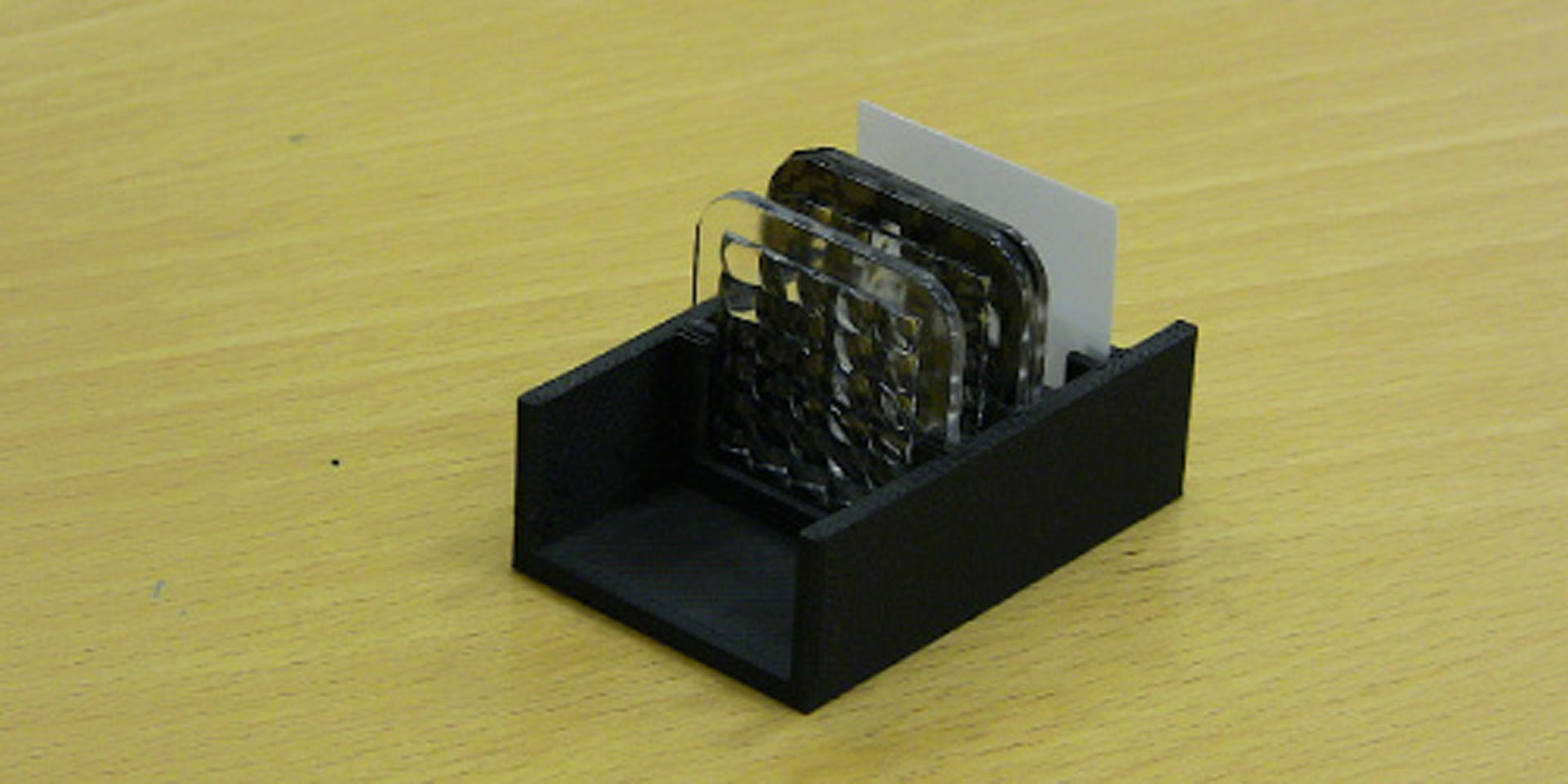“Towards passive 6D reflectance field displays” by Fuchs, Raskar, Seidel and Lensch
Conference:
Type(s):
Title:
- Towards passive 6D reflectance field displays
Presenter(s)/Author(s):
Abstract:
Traditional flat screen displays present 2D images. 3D and 4D displays have been proposed making use of lenslet arrays to shape a fixed outgoing light field for horizontal or bidirectional parallax. In this article, we present different designs of multi-dimensional displays which passively react to the light of the environment behind. The prototypes physically implement a reflectance field and generate different light fields depending on the incident illumination, for example light falling through a window. We discretize the incident light field using an optical system, and modulate it with a 2D pattern, creating a flat display which is view and illumination-dependent. It is free from electronic components. For distant light and a fixed observer position, we demonstrate a passive optical configuration which directly renders a 4D reflectance field in the real-world illumination behind it. We further propose an optical setup that allows for projecting out different angular distributions depending on the incident light direction. Combining multiple of these devices we build a display that renders a 6D experience, where the incident 2D illumination influences the outgoing light field, both in the spatial and in the angular domain. Possible applications of this technology are time-dependent displays driven by sunlight, object virtualization and programmable light benders / ray blockers without moving parts.
References:
1. Debevec, P., Hawkins, T., Tchou, C., Duiker, H.-P., Sarokin, W., and Sagar, M. 2000. Acquiring the reflectance field of a human face. In Proceedings of ACM SIGGRAPH 2000, Computer Graphics Proceedings, Annual Conference Series, 145–156. Google ScholarDigital Library
2. Fuchs, M., Blanz, V., Lensch, H. P. A., and Seidel, H.-P. 2007. Adaptive sampling of reflectance fields. ACM Transactions on Graphics (TOG) 26, 2 (June). Google ScholarDigital Library
3. Georgiev, T., Zheng, K. C., Curless, B., Salesin, D., Nayar, S., and Intwala, C. 2006. Spatio-angular resolution trade-offs in integral photography. In Rendering Techniques 2006: Eurographics Symposium on Rendering, 263–272. Google ScholarCross Ref
4. Gerrard, A., and Burch, J. M. 1975. Introduction to Matrix Methods in Optics. John Wiley & Sons, New York – Chichester – Brisbane.Google Scholar
5. Isaksen, A., McMillan, L., and Gortler, S. J. 2000. Dynamically reparameterized light fields. In Proceedings of ACM SIGGRAPH 2000, Computer Graphics Proceedings, Annual Conference Series, 297–306. Google ScholarDigital Library
6. Javidi, B., and Okano, F. (Ed.). 2001. Three-dimensional video and display: devices and systems. SPIE, Washington, USA. Google ScholarDigital Library
7. Koike, T., and Naemura, T. 2007. BRDF display. SIGGRAPH 2007 poster presentation. Google ScholarDigital Library
8. Levoy, M., Ng, R., Adams, A., Footer, M., and Horowitz, M. 2006. Light field microscopy. ACM Trans. Graph. (Proc. SIGGRAPH) 25, 3, 924–934. Google ScholarDigital Library
9. Lippmann, G. 1908. Epreuves reversibles donnant la sensation du relief. Journal of Physics 7, 821–825.Google Scholar
10. Matusik, W., and Pfister, H. 2004. 3D TV: a scalable system for real-time acquisition, transmission, and autostereoscopic display of dynamic scenes. ACM Trans. Graph. (Proc. SIGGRAPH) 23, 3, 814–824. Google ScholarDigital Library
11. Min, C., Wang, P., Jiao, X., Deng, Y., and Ming, H. 2007. Beam manipulating by metallic nano-optic lens containing nonlinear media. Opt. Express 15, 15, 9541–9546.Google ScholarCross Ref
12. Nakajima, S., Nakamura, K., Masamune, K., Sakuma, I., and T., T. D. 2001. Three-dimensional medical imaging display with computer-generated integral photography. Computerized Medical Imaging and Graphics 25, 235–241.Google ScholarCross Ref
13. Nayar, S. K., Belhumeur, P. N., and Boult, T. E. 2004. Lighting sensitive display. ACM Trans. Graph. 23, 4, 963–979. Google ScholarDigital Library
14. Ng, R., Levoy, M., Brédif, M., Duval, G., Horowitz, M., and Hanrahan, P. 2005. Light field photography with a hand-held plenoptic camera. Stanford University Computer Scienece Tech Report.Google Scholar
15. Scharstein, H., Krotz-Vogel, W., and Scharstein, D. 1996. Digital sundial. In US patent 5 590 093, German patent 4 431 817.Google Scholar
16. Sun, Z., and Kim, H. K. 2004. Refractive transmission of light and beam shaping with metallic nano-optic lenses. Appl. Phys. Lett. 85, 652.Google ScholarCross Ref
17. Veeraraghavan, A., Raskar, R., Agrawal, A., Mohan, A., and Tumblin, J. 2007. Dappled photography: mask enhanced cameras for heterodyned light fields and coded aperture refocusing. ACM Trans. Graph. (Proc. SIGGRAPH) 26, 3, 69. Google ScholarDigital Library
18. Ziegler, R., Bucheli, S., Ahrenberg, L., Magnor, M., and Gross, M. 2007. A bidirectional light field – hologram transform. In Computer Graphics Forum (Proc. Eurographics), D. Cohen Or and P. Slavik, Eds., vol. 26, 435–446.Google Scholar





